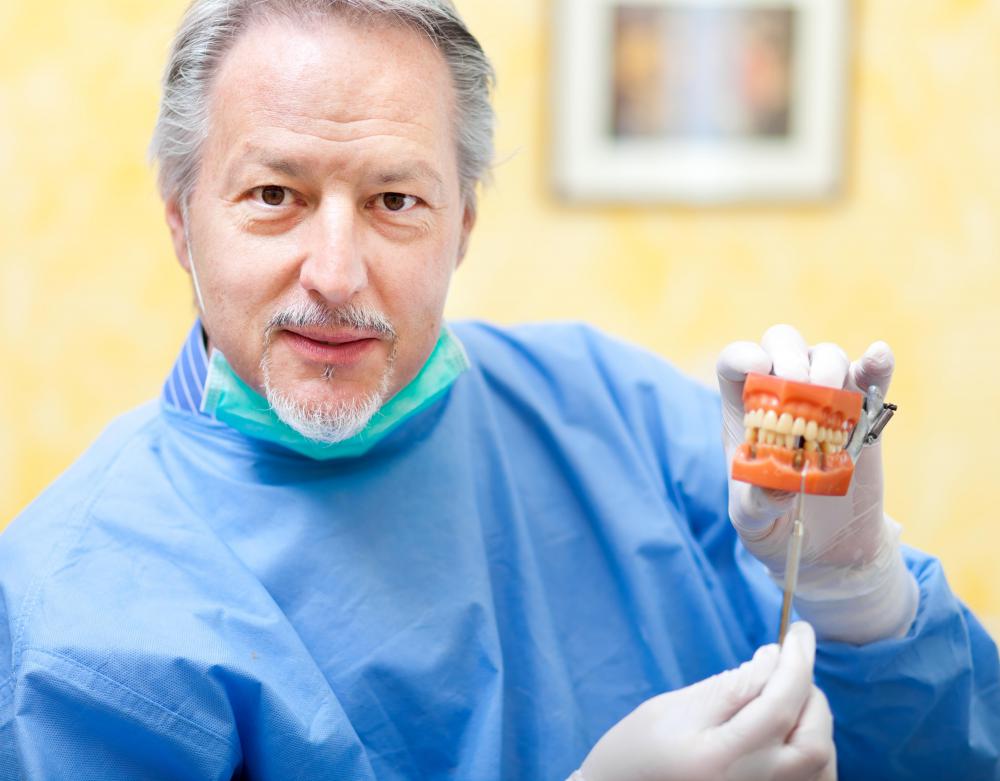At WiseGEEK, we're committed to delivering accurate, trustworthy information. Our expert-authored content is rigorously fact-checked and sourced from credible authorities. Discover how we uphold the highest standards in providing you with reliable knowledge.
What is CEREC®?
First developed in 1980, Chairside Economical Restoration of Esthetic Ceramics (CEREC®) is a product designed to restore a patient's teeth in a single sitting. Typical restoration procedures include veneers, crowns and inlays. When it was officially unveiled — after a series of tweaks — in 1985 at the University of Zurich in Bensheim, Germany, CEREC® was touted as an alternative to other restorative products that required patients to visit a dentist on multiple occasions.
Working in conjunction with computer assisted programs, CEREC® enables dentists to use state-of-the-art software and hardware while performing such procedures as veneers, onlays and inlays and crowns. Computer assisted programs include 3D photography, computer-aided design (CAD) and computer-aided manufacturing (CAM). CEREC® enables dentists to use a variety of different types of ceramic material.

Depending upon the procedure, a dentist using CEREC® typically coats a treated tooth with white powder that will be picked up by a computer assisted program and transferred to a computer hooked into the proprietary programs CEREC® uses. By reviewing the programs, a dentist can instantly determine how to restore a tooth to its original form. Once the computer has finished its analysis with the proprietary programs, data in the form of a 3D image will be stored and sent to a device known as a milling machine.

The design software included with CEREC® enables dentists to work with a database of different tooth shapes to help plan for the proper restorative treatment. The process includes obtaining an imprint of the tooth or teeth in need of treatment with a wax or rubber-like material. The imprint is used alongside the 3D images with the goal of determining the best treatment option.

Once the appropriate information has been transferred, the restorative material — either in the form of solid ceramic or a composite block — can be created inside the milling machine. Depending upon the type of restoration, a new restorative product can be created in as little as four minutes; the maximum time it takes to mill a restoration hovers around 20 minutes. The ceramic material used with CEREC® generally wears away at the same rate as enamel.
Technology naturally has evolved since 1980 and so has CEREC®. Since leaving the university lab, the product has been manufactured by a German-based company, Sirona Dental Systems. The first 3D imaging was unveiled in 2003. Three years later, an addendum to the the proprietary software enabled dentists to accurately determine a missing tooth's shape and surface.
AS FEATURED ON:
AS FEATURED ON:













Discuss this Article
Post your comments